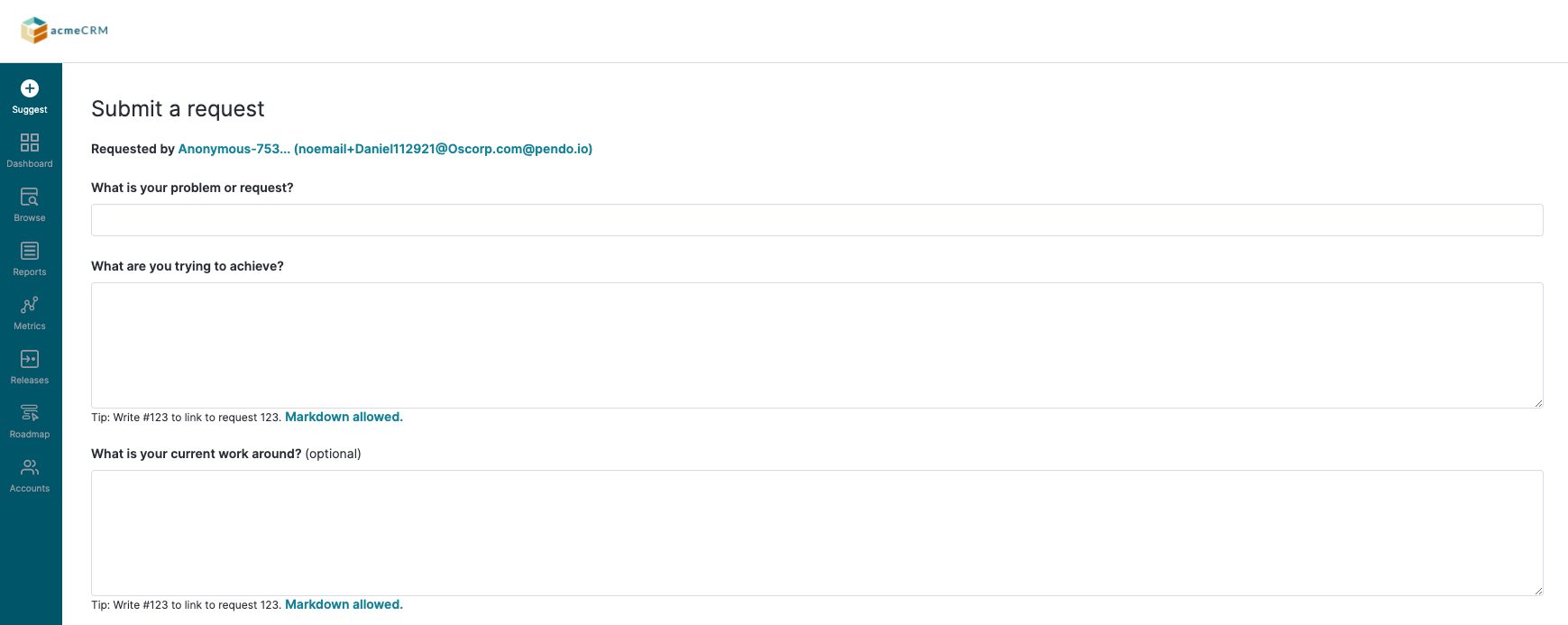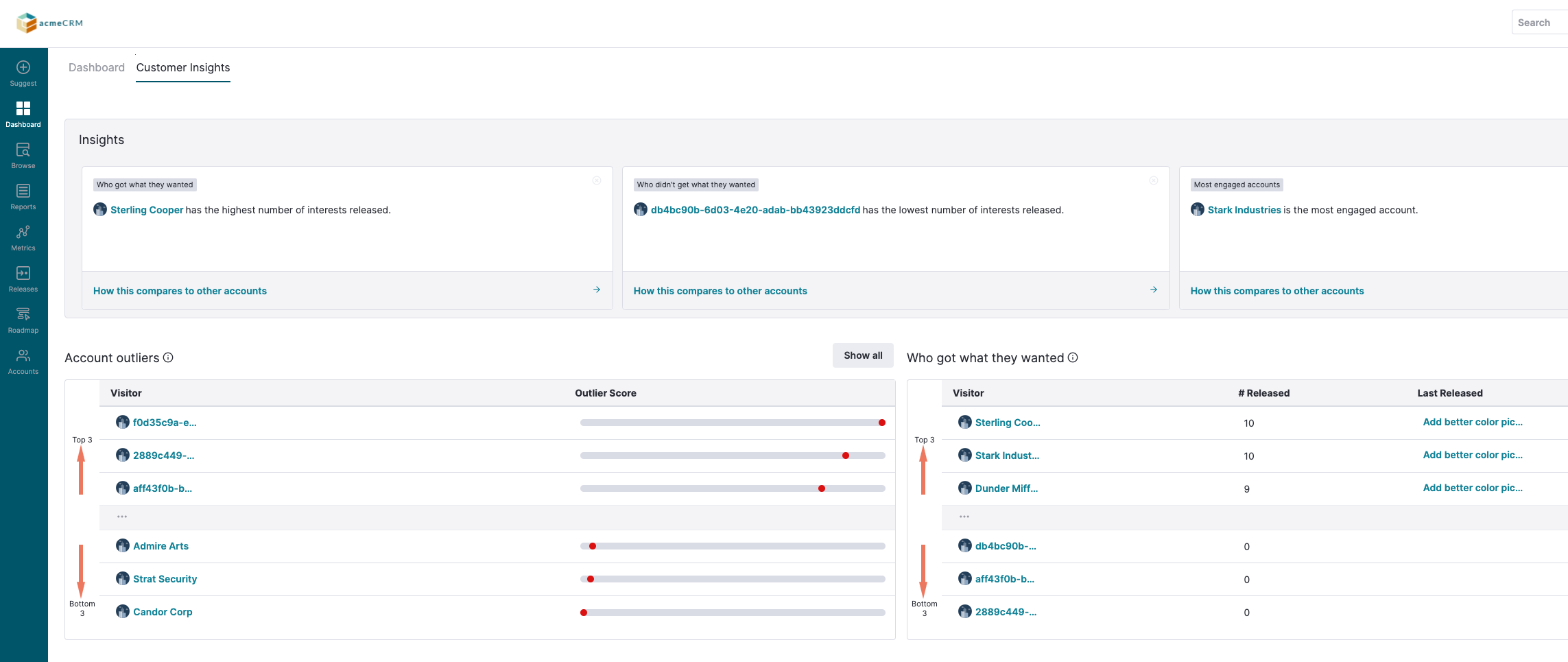The term “product feedback” is a bit of a misnomer. Yes, it’s customer feedback about your product. But that doesn’t make it the sole responsibility of the product team.
Product feedback is a subcategory of customer feedback, which is information provided by customers or users about their experience with a product or service. Its purpose is to reveal a customer’s level of satisfaction with a product so that the teams building it can gain an understanding of where there’s room for improvement—and which requests to prioritize.
While product feedback is rooted in your customers’ experiences with the product, the reality is that it touches all areas of the business. Teams across the organization have some role to play in making sure each piece of feedback gets the appropriate attention it deserves, is enriched with additional quantitative data or qualitative context wherever possible, and gets acted on in a timely fashion.
In particular, customer success (CS) teams are ideally suited to collect, contextualize, and close the loop on what their customers have to say about the product. And with Pendo Feedback, customer success managers (CSMs) are more empowered than ever to participate in their company’s voice of the customer (VoC) processes and leverage feedback to strengthen and inform their relationships with their customers.
Why Pendo Feedback is a powerful tool for customer success teams
A typical challenge for organizations looking to set up a feedback program is getting all of their customer and product data into one place. It’s not uncommon to see organizations early in their VoC journeys (or even very large and siloed enterprise organizations) spread and manage their feedback through a piecemeal approach, with data divvied up across numerous platforms and tools—like Google Docs, spreadsheets, Slack, and others.
At first, breaking up the data like this might make it feel easier to manage. But in the long-run, a segmented approach makes it impossible for teams to identify trends or understand which feedback requests might have the greatest impact on the business. It also creates huge gaps in the organization’s understanding of the full context of the customer experience—and inhibits making better product decisions based on that context.
For example, the product team might track feature requests and plan the roadmap using a private spreadsheet, while CSMs might record anecdotal feedback gathered from interactions with customers in a CRM platform (or worse, a notebook or personal document). With neither team sharing their insights with each other, both lack the full story behind the customer’s request—or end up having to duplicate work to get it.
Pendo Feedback creates a centralized view of all the feedback and requests your organization receives from customers, prospects, and internal users. For CSMs, bringing all of this customer and product feedback into one place in this way allows you to:
- Keep track of who’s asked for what—so you aren’t blindsided and can provide meaningful updates when you walk into customer meetings
- Close the loop with users who’ve submitted feedback and feature requests—so you can continually build trust with your customers
- Quantify what’s important—so you have clear visibility into the volume of requests and feedback being submitted (and the value associated with each) to stay ahead of churn
- Collect data at scale—so you can collaborate with the product team to understand how the product experience is impacting customer sentiment, and chart a course to improve it
How CSMs can use Pendo Feedback
Pendo Feedback helps create a culture of transparency by democratizing customer feedback data, empowering CSMs to use their expertise to improve the company’s understanding of the product experience, and creating a single source of truth that leads to more informed roadmapping decisions.
By nature, Pendo Feedback isn’t just for product teams. It’s also a valuable tool to help CS teams better understand what their customers are asking for, close the loop on requests customers have sent in, and scale how they connect with their customers around feedback.
Collecting feedback from customers in-app
There are a few simple ways to solicit feedback from users directly within the product using Pendo Feedback:
- Feedback widget: A blade that pops out from the side of the screen, within your product
- Resource Center: A fully customizable collection of resources available in-app, usually accessible from a small icon in the lower right-hand corner of the screen
- Feedback button: A button that can be embedded anywhere in your product that opens the Feedback portal when clicked
All three of these approaches allow visitors to self-serve and submit their own feature requests, at their convenience. Users can also make suggestions, review feature requests that have been recently released, view their priorities (the requests they’ve voted on), and browse suggestions made by other users. CS teams should collaborate with product managers (PMs) and product designers to determine the right placement for feedback solicitation within the product—adding value by sharing their knowledge of their customers’ preferences.
Collecting this kind of feedback inside your product (or, in-app) greatly improves the likelihood that users will share their thoughts, and improves the quality of the feedback they submit because it can be captured within the context of the product, in the moment they’re using it or experiencing an issue.
Submitting feedback on behalf of customers
Depending on your organization’s preferences, Pendo Feedback may not be visible beyond your internal teams. In other words, your customers or end users might not be able to submit feedback themselves through a Feedback widget within your product—but rather, will need to share their ideas with their CSM or account manager to submit on their behalf.
Many Pendo customers actually start with this approach before fully rolling Feedback out to their external stakeholders. But even if an external rollout isn’t your company’s end-goal, submitting feedback on behalf of your customers through the Pendo Feedback portal is still an extremely valuable way to capture their sentiment and requests.
Pendo starts collecting usernames and email addresses, plus the ARR associated with each user or visitor, as soon as the snippet is installed. From there, CSMs can submit feedback on behalf of customers through the Pendo Feedback portal:
- Navigate to “Suggest” in Pendo Feedback
- Click on “you” in the “Requested by you” field
- Type in the name of the customer you’re submitting feedback on behalf of
- Select their name from the dropdown
- Fill out the rest of the fields and submit their feedback

In some ways, this internal approach can actually benefit the organization—particularly if you’re new to VoC or setting up a feedback process for the first time. As a CSM, you’re well-positioned to include additional context and detailed commentary with each request based on conversations you’ve had with your customers—which they likely wouldn’t have added themselves. This ultimately speeds up the triage process down the line. And particularly for teams who are just getting started with VoC, limiting Feedback to internal users can help keep the volume of incoming feedback from feeling too overwhelming.
Understanding feedback at the account and visitor level
Pendo Feedback helps CSMs easily visualize and dig into any feedback or requests that have been submitted at both the account and visitor level. This allows them to quickly understand the volume and value of the feedback, see the status of each request visitors (i.e. users) within the account have made (plus any action taken by the product team), and view all of the requests made by users within the account that have already been released.
This level of visibility helps CSMs have more positive, productive conversations with their customers. It’s a valuable way for CSMs to prepare for key customer touch points (like QBRs). And it helps CSMs demonstrate that they’re on top of their customers’ needs and have a clear understanding of what they care about most.
Pendo Feedback’s Customer Insights dashboard is another valuable tool for CS teams. In this view, CSMs can easily spot patterns or insights across all of their accounts, including:
- Customers who had the most features or requests released, that they asked for
- Customers who have voted for unusual or outlying requests
- How engaged customer accounts are—based on the number of requests they’ve reviewed, votes they’ve submitted, or items they’ve prioritized
- Which features users within an account asked for before they became inactive
All of these insights are extremely valuable for helping CSMs determine their engagement strategy for each of their customers—and gives them good fodder for discussion in customer check-ins or upsell and renewal conversations.

Correlating customer behavior to customer feedback
Customer feedback is considered qualitative data, and is just one side of any product story. To truly understand exactly how your customers are engaging with your product—and what they care about most—you need to pair feedback with a healthy dose from a product analytics tool. If you wondering what is product analytics and how it benefits you keep reading.
Leveraging the entire Pendo platform, including Analytics and Feedback, allows you to see how your customers are using your product and the requests they’ve submitted—all in one place, at the user and account level. This helps you understand what actions users within each account are taking in the product, as well as what they think about it. You can also create segments in Analytics based on customer requests made in Feedback—giving CSMs another way to analyze customer behaviors within the product so they can intervene if and when necessary.
Further reading
Looking to learn more about how CS teams can work with product to leverage feedback as a competitive advantage? Check out our three-part CS series (linked below) and register for our upcoming webinar, How CS teams can use product insights to delight their users.
- Part one: The challenges that have kept customer success and product teams from collaborating at their best
- Part two: Why it’s more important than ever for PM and CS to collaborate around feedback
- Part three: How a strong VoC program drives a better customer experience


